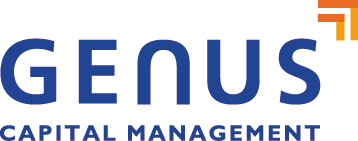Watch Friday Market Insights – Rising rates and lack of Fed clarity is causing volatility, with Ian Lusher and Mike Thiessen
Timestamp
[00:00:00] Intro
[00:00:23] : What happened in the markets this week?
[00:01:05] : Due to the market movements, what have we done inside our portfolios? And is there anything in particular that we did this week in terms of adjustments?
[00:02:25] : Can you explain to our clients why exactly the bond market is reacting the way it is right now?
[00:04:27] : The Johnson and Johnson vaccine has been approved in the US. How much of a big deal is this one shot vaccine? So what do you think the overall impact long term to the economy will be from this particular vaccine?
[00:06:44] : Is Canada being left in kind of an unenviable position economically due to this lagged vaccine vaccination plan?
Ian Lusher: [00:00:04] Welcome, everybody, to our Friday Market Insights. My name’s Ian Lusher. I’m a partner and portfolio manager at Genus Capital Management, and I’m joined by Mike Thiessen, who is also a partner, and he is our director of Sustainable Investing. So, Mike, we’ll get right into it.
Mike Thiessen : [00:00:22] Sure.
Ian Lusher: [00:00:23] What happened in the markets this week?
Mike Thiessen : [00:00:26] Yes, so this week was a very volatile week. A lot of movement happening in the S&P 500 is down, around one percent on the TSX is is flat to slightly on the week as of right now. And we’re reporting things can change. So the big news this week is the US 10 year yields continue to increase. And this is due to kind of the renormalization of the economy, some fears of inflation and the Federal Reserve really not doing too much about that. But we can get more into that later. So a lot of movement, but the market’s not really going one direction very strongly yet.
Ian Lusher: [00:01:05] Due to the market movements, what have we done inside our portfolios? And is there anything in particular that we did this week in terms of adjustments?
Mike Thiessen : [00:01:14] Yeah, yeah. So we have been making adjustments in clients portfolios, especially around kind of the the renormalization of the economy and around technology. So we have been taking technology down and a lot of portfolios to a more neutral stance. And we’ll be doing that even more throughout this next week as well as we rebalance a lot of our portfolios. Technology in our models isn’t it looking as attractive as before and with with rates going with rates going up, then the overall valuations of these of these tech companies aren’t quite as attractive as before. So we’re taking some technology kind of off the table, being more neutral. And then we’re we’ve for a while, we’ve had some weight in companies that would do quite well in an economic recovery. But we’re we’re adding to those weights. So adding to areas like financials, like materials, like industrials. And so this is really the kind of economic reopening where we’re seeing that the economic reopening is going to continue.
Ian Lusher: [00:02:16] Exactly. So you alluded earlier to the reaction, reaction in the bond market and, you know, the yields going up. Can you explain to our clients why exactly the bond market is reacting the way it is right now?
Mike Thiessen : [00:02:34] Sure, yeah, so so yields are rising because of the kind of the renormalization of the economy and people are seeing the economic recovery happening and then there’s also fears of inflation. And so when investors see that, then they think that there could be a tightening of the monetary policy, which means that rates could be going up by by central banks around the world, especially the Fed and the Fed and Powell have been kind of waffling on the whole situation, not really giving any clear guidance. So that’s creating more uncertainty around around the markets. And when this happens, that also affects the equity market, certain parts of the equity market. So certain companies do quite well during a reopening or during times when when rates go up. But then other sectors like technology rely so much on this cheap capital, especially right now, that they haven’t been doing well, just the prospect of rates going up. And so much of these tech companies valuation is based on the value of their future cash flows that might be five years out, 10 years out. And so when rates go up, then then you have to discount these future cash flows by these higher rates, which brings down the overall value of those companies. And so ultimately, tech companies evaluation is going down. And we saw the Nasdaq really crash this week. And so that’s really overpowering these other industries that aren’t doing too well and are actually.
Ian Lusher: [00:03:58] Yeah, I mean, what’s happening right now is actually quite healthy for our clients in terms of we have a portfolio approach so we don’t have everything in one in one basket. So having this happen this week is very good for people in a portfolio approach because we have quite a bit of exposure to those areas that have kind of been ignored up until maybe even the last week or two.
Mike Thiessen : [00:04:24] Yeah.
Ian Lusher: [00:04:25] We talked about this previously. The Johnson and Johnson vaccine has been approved in the US. It’s now approved in Canada. How much of a big deal is this one shot vaccine? And also the fact that they’ve made a deal in the States with Merck to help produce. So what do you think the overall impact long term to the economy will be from this particular vaccine?
Mike Thiessen : [00:04:50] Yeah, I think there’s going to have a big effect on on the economy in the short run and long run for Canada and the US, I think that, of course, it’s great to get more vaccines going for health and well-being, of course, of the country. But then also just to get get get more of these industries back online that have been that have been off for so long. And the Jayjay vaccine is special because there’s only a one shot vaccine. So that’s good from a logistical perspective, because you only need to have that one shot. You don’t need to figure out where you’re going to have the second shot of that same vaccine. And and then on the production front, if you’re producing one hundred thousand of these JMJ vaccines, that means that one hundred or a hundred thousand people can get vaccinated versus if you’re doing that for Fizer or Moderna, that where you need two shots, that means only fifty thousand people can get vaccinated if you’re making one hundred thousand. So on the on the production front, it’s great. And yeah, and they’ve signed an agreement with Merck to help produce even more of this vaccine. So ultimately, I think that’s going to be great for the economy. The JJ vaccine isn’t as effective as as the Pfizer or Moderna I think it’s sixty six percent effective, but it’s about 80 percent effective or more for the more severe cases. So those are really the ones that we want to be stopping. We want to be lowering the hospitalization rate and of course the death rate around the virus.
Ian Lusher: [00:06:11] I mean, the simple answer is one shot is better than two and more vaccines is always better. More options is better.
Mike Thiessen : [00:06:18] Yeah.
Ian Lusher: [00:06:19] The US markets, particularly some of the southern states, Texas, Mississippi, they’re making a push to fully open up. They’re actually completely ending their market mandate. Part of this is due to declining numbers. And part of it some of it’s political. But really the end result of this is due to higher vaccination rates in the US versus say, what we’re seeing here in Canada is Canada being left in kind of an unenviable position economically due to this lagged vaccine vaccination plan?
Mike Thiessen : [00:06:53] Yeah, I think Canada is is going to be falling behind economically because of this. We’re going to be we’re going to be opening much later than other areas of the world like the US. And that, of course, does hurt our economy. It hurts people that are out of jobs that that are really relying on this recovery happening in Canada right now. I think it’s about five or six percent of the population is vaccinated versus about twenty five percent in the US. So there’s a really big difference there. And we’re not going to be to go into mass immunizations of people under 65 until July. And there probably isn’t going to be enough supply for us until July or sometime in the summer as well. So I think once the US finishes most of their vaccinations and areas of Europe, there’s going to be a lot of supply of these vaccinations. So I think that will probably happen kind of late summer, early fall. So then we’ll have so much supply. It’s just going to be a matter of figuring out how to do these mass immunizations with the general population.
Ian Lusher: [00:07:52] Thank you very much for that answer. And we’ve got we’re out of time, so thanks everyone for watching again. Have a great weekend and take care.
Mike Thiessen : [00:08:01] Thank you.














